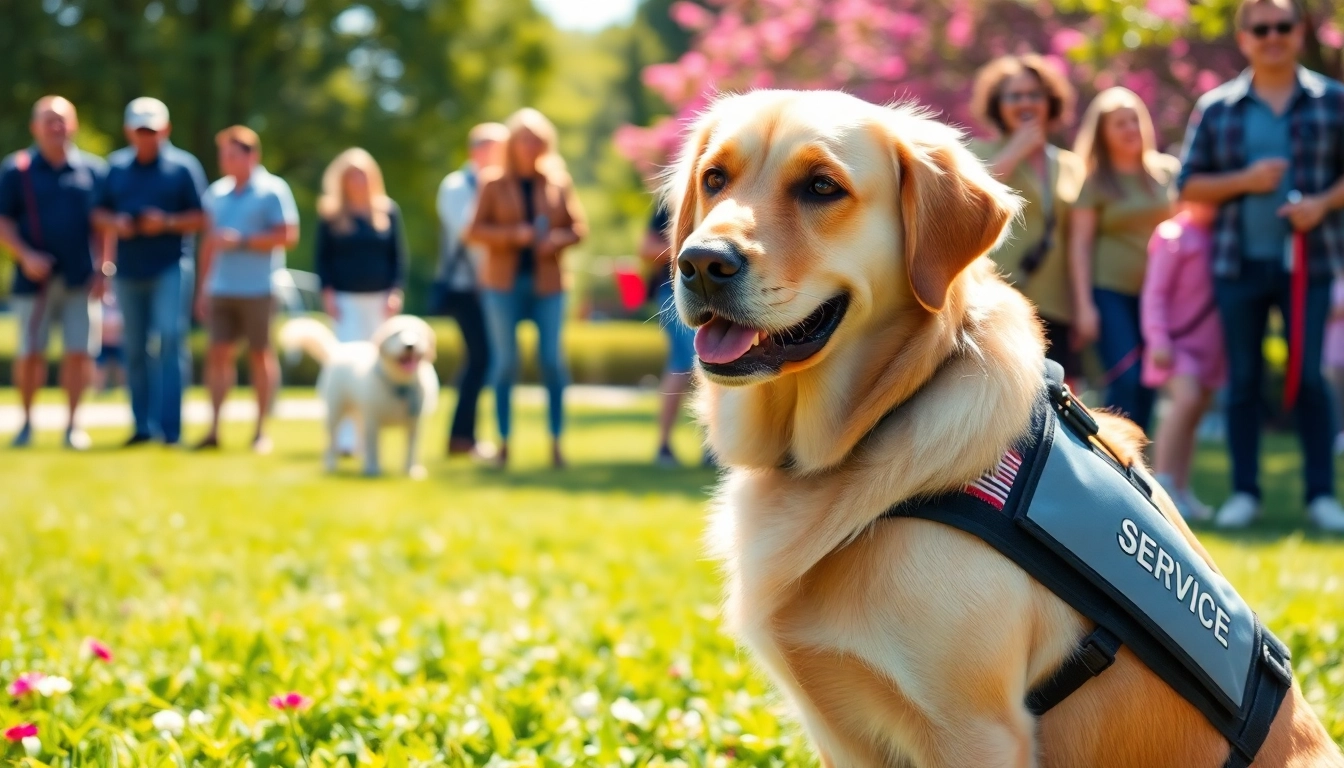Understanding the Need to Buy a Service Dog
Service dogs play an essential role in enhancing the quality of life for individuals with disabilities, allowing them to navigate the world with greater independence and confidence. If you’re considering buy a service dog, it’s crucial to first understand not only the benefits these companions provide but also the significant responsibilities involved.
Evaluating Your Requirements and Lifestyle
Before proceeding to purchase a service dog, evaluate your personal needs and lifestyle. Consider the following factors:
- Type of assistance required: Are you looking for help with mobility, sensory processing, or emotional support?
- Living environment: Do you live in a spacious house or a small apartment? Does your living arrangement allow for a pet?
- Daily routine: Assess how much time you dedicate each day to training, exercising, and caring for a dog.
Types of Service Dogs and Their Training
Service dogs are trained to assist individuals with a variety of disabilities. Familiarizing yourself with different types can help you determine which kind fits your needs:
- Guide dogs: Primarily trained to assist visually impaired individuals with navigation.
- Hearing dogs: Assist those who are deaf or hard of hearing by alerting them to important sounds.
- Mobility assistance dogs: Help individuals with physical disabilities improve their movement and mobility.
- Medical alert dogs: Trained to detect and alert their owners to medical issues like seizures or diabetes.
- Psychiatric service dogs: Provide support for individuals with mental health disorders, such as PTSD or anxiety.
Identifying Your Disability and Related Tasks
Identifying the specific tasks you need assistance with is vital in selecting an appropriate service dog. Create a detailed list of your needs and how a service dog can help fulfill them. This will not only assist in selecting the right companion but will also guide the training required for the service dog.
The Process of Acquiring a Service Dog
Steps to Buy a Service Dog from Reputable Sources
The process of acquiring a service dog involves several key steps:
- Research: Conduct thorough research to identify reputable organizations or breeders known for training service dogs.
- Application: Once you identify a potential source, fill out any required applications, detailing your needs and lifestyle.
- Interviews: Be prepared for interviews to assess your compatibility with the dog and the program.
- Meet and Greet: If approved, you’ll typically have a meet-and-greet session to evaluate your comfort level with the dog.
- Adoption and Training: After selecting a service dog, you will generally go through a training period to build a bond.
Cost Considerations and Financial Resources
Buying a service dog can be a significant financial commitment. Costs vary depending on various factors, including the dog’s breed, training level, and the provider’s reputation. On average, prices can range from $15,000 to $30,000. Keep these financial considerations in mind:
- Funding options: Explore grants, funding programs, or organizations that assist in financial support for acquiring a service dog.
- Insurance coverage: Check whether your health insurance plan covers any part of the costs involved in acquiring and training a service dog.
- Long-term maintenance: Factor in ongoing costs such as food, veterinary care, and potential training refreshers.
Application and Approval Procedures
Understanding the application process for acquiring a service dog is critical. Every organization may have different criteria, but generally, you can expect the following:
- Documentation: Be prepared to provide documentation, such as medical records, to prove your disability.
- Personal interviews: Many organizations will conduct interviews to ensure you’re a suitable candidate for a service dog.
- Waiting lists: Some reputable organizations have long waiting lists due to high demand.
Training and Bonding with Your Service Dog
Initial Training Techniques for Service Dogs
Training your service dog effectively requires dedication and consistency. Here are some techniques to consider:
- Positive reinforcement: Use treats, praise, and other rewards to encourage desirable behavior.
- Socialization: Expose your dog to various environments, sounds, and people to reduce anxiety.
- Commands: Teach essential commands such as “sit,” “stay,” “come,” and “heel” to ensure safety and control.
Building a Strong Partnership with Your Dog
A strong bond between you and your service dog enhances the effectiveness of their assistance. Here are some tips for fostering this relationship:
- Regular exercise: Engage in daily exercise to build physical connection through shared activities.
- Consistency: Maintain a consistent routine in both training and daily activities.
- Quality time: Spend quality time simply enjoying each other’s company to strengthen your bond.
Ongoing Training and Support Needs
Once initial training is complete, ongoing training will help maintain your dog’s skills and adapt to new tasks. Regular training sessions, attendance at support groups, and continual education can support both of you throughout your journey together.
Legal Rights and Responsibilities When You Buy a Service Dog
Understanding ADA Regulations and Access Rights
Understanding your legal rights regarding service dogs is crucial. The Americans with Disabilities Act (ADA) provides significant protection for service dog handlers, allowing them access to public spaces. Key points include:
- Public access: Service dogs are permitted in any public space, including restaurants, stores, and public transport.
- Questions allowed: Business owners are limited in the questions they can ask regarding your service dog status.
- Documentation: You’re not required to show any identification that your dog is a service animal.
The Fair Housing Act and Service Dogs
The Fair Housing Act also offers important rights regarding housing. Here’s what you should know:
- Emotional support: Service dogs can be considered emotional support animals, granting access to housing that may have pet restrictions.
- Reasonable accommodations: Landlords are generally required to make reasonable accommodations for service dog owners.
Managing Public Interactions and Etiquette
Public interactions can sometimes be challenging for service dog handlers. Educating yourself on how to manage these situations is crucial:
- Ignore distractions: Practice ignoring people who may want to pet or interact with your service dog, as this can disrupt the dog’s focus.
- Educate others: Be prepared to educate those around you about your service dog’s purpose if necessary.
- Safety first: Always prioritize your service dog’s comfort and safety in public interactions.
Tips for Maintaining a Healthy Relationship with Your Service Dog
Nutrition and Health Care for Your Service Dog
A well-balanced diet and regular health care are essential for your service dog. Key responsibilities include:
- Checkups: Regular veterinary check-ups to address preventive care and health issues.
- Balanced diet: Consult with your veterinarian to devise a nutrition plan best suited for your dog’s age, breed, and activity level.
- Dental hygiene: Don’t forget dental care; healthy teeth contribute significantly to your dog’s overall wellbeing.
Regular Exercise and Mental Stimulation
Along with physical health, mental stimulation is vital for service dogs. Here are effective ways to keep your dog engaged:
- Interactive toys: Incorporate puzzle toys and games into your dog’s routine.
- Training sessions: Continuously engage in training exercises to stimulate their minds.
- Outings: Regular trips to new environments will provide new experiences to explore.
Building a Support Network for Assistance
Finally, building a support network can greatly enhance your experience with your service dog. Connect with other service dog owners through local support groups and online forums. This network can provide valuable insights, advice, and a sense of community.



